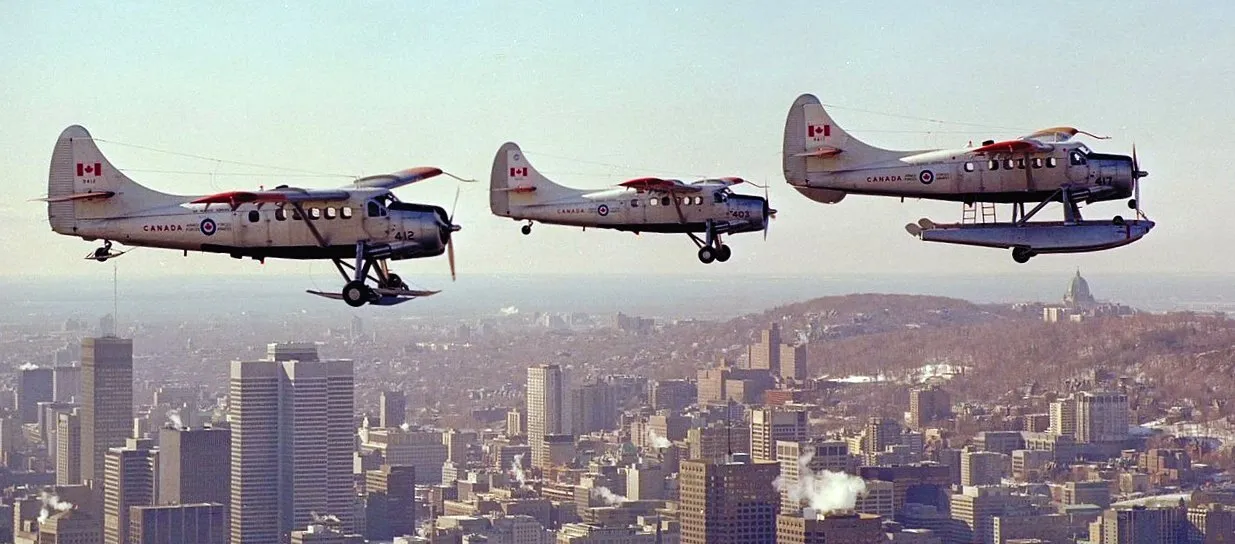Lacroix, Celine Marie Therese
Killed in Flying Accident 1981-10-02

Birth Date: 1957
Born:
Home:
Enlistment:
Enlistment Date: Unknown
Service
RCAF
Unit
1 Reserve Support Unit
Base
Rank
Officer Cadet
Position
Officer Cadet
Service Numbers
N32130925
First Burial
 St Genevieve Cemetery, St Genevieve, Quebec, Canada
St Genevieve Cemetery, St Genevieve, Quebec, Canada
Otter 9417
de Havilland Canada Otter

de Havilland CC-123 Otter formation, No. 438 Squadron, RCAF, over Montreal, Quebec.
The de Havilland Canada DHC-3 Otter is a single-engined, high-wing, propeller-driven, short take-off and landing (STOL) aircraft. It was conceived to be capable of performing the same roles as the earlier and highly successful Beaver, including as a bushplane, but is overall a larger aircraft.
The DHC-3/CC-123/CSR-123 Otter was used until 1980 by the RCAF and its successor, CF Air Command. It was used in Search and Rescue, as the "CSR" denotes Canadian Search (and) Rescue (type 123) and as a light utility transport, "CC" denoting Canadian Cargo. During the Suex Crisis, the Canadian government provided assistance to the UN Emergency Force (UNEF). HMCS Magnificent carried 4 Otters from Halifax to Port Said, Egypt, early in 1957, with all four flying off unassisted while the ship was at anchor. This was the only occasion when RCAF fixed wing aircraft operated from a Canadian warship. It was also operated on floats on water and skis for winter operations on snow. The EDO floats also had wheels for use on runways (amphibious). It was used as army support dropping supplies by parachute, and also non-parachute low-speed, low-altitude air drops, to support the Canadian Army on manoeuvres. In the end it was operated by the Primary Air Reserve in Montreal, Toronto, Edmonton and Winnipeg, with approximately 10 aircraft at each base, as well as by the RSU (Regular (Forces) Support Units) at those bases. It was usually flown with a single pilot (Commissioned Officer) in the left seat and a Technical Air Crewman (NCO) in the right seat. The Kiowa helicopter replaced it in Air Reserve squadrons.
Although the Otter found ready acceptance in bush airlines, as in a similar scenario to the DHC-2 Beaver, the US Army soon became the largest operator of the aircraft (184 delivered as the U-1A Otter). Other military users included Australia, and India, but the primary role of the aircraft as a rugged bush plane continues to this day.
An Otter crossed the South Pole in 1957 (see Commonwealth Trans-Antarctic Expedition). The Otter is also popular in the skydiving community and can be found in many dropzones throughout the world.Harold Skaarup web page
 Library and Archives Canada Service Files (may not exist)
Library and Archives Canada Service Files (may not exist)

 Otter
Otter Wikipedia Otter
Wikipedia Otter Harold A Skaarup Web Page
Harold A Skaarup Web Page